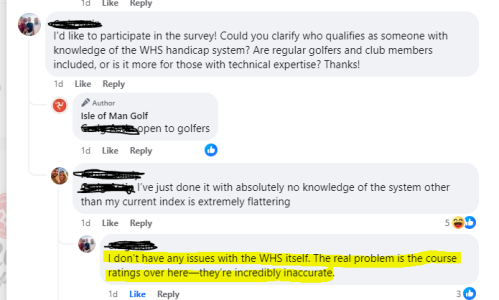Swango1980
Well-known member
If golfers are playing in 40kph winds, or the greens especially difficulty, what impact do you think that may have on the scores?thanks, so its immaterial whether the condition is a 40kph wind or 18 hollow tined greens or selected white tee's moved back (for recovery) when yellow tees remain unchanged
How does it know what its calculating for ?
And, if scores are worse than normal, what impact do you think that should have on PCC?
What would be worse would be for an individual person to decide what number to set it to at the end of the day. You'd need that person(s) to be at the course every day, and subjectively decide the value based on the factors you mentioned, and provably dozens more
